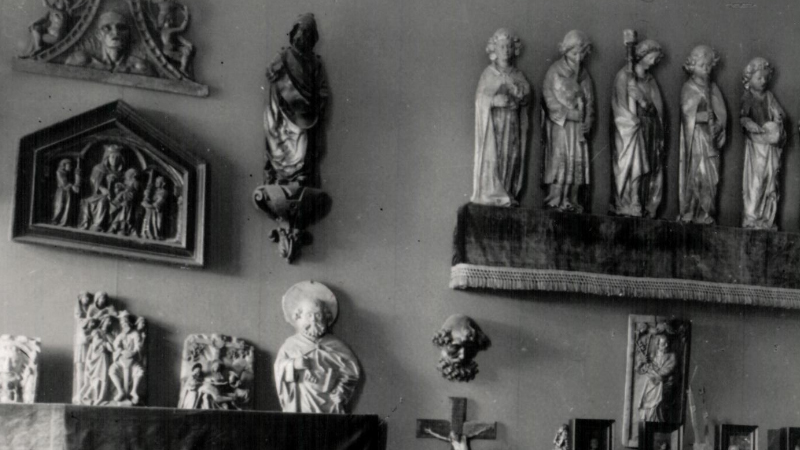In homage to Guerra Junqueiro, when we commemorate the hundredth anniversary of his disappearance, we show a significant part of the poet's collection, which today is a part of the Museu Nacional de Arte Antiga collections.
Abílio Manuel Guerra Junqueiro was born in 1850, in Freixo de Espada à Cinta. He studied at the University of Coimbra, first Theology, then Law. He was a prominent politician and tribune, venturing into diplomacy. He was an agrarian manager. But he is remembered above all for his literary work.
Married in 1880 to Filomena Augusta Neves, from Viana do Castelo, he used part of his “dowry” to invest in “antique things”: the beginning of his collecting activity dates from this time. Junqueiro travels the country and abroad collecting works of art. He buys, sells, exchanges, takes an interest, investigates, and crafts theories, but he delights mainly in the antiques with which he filled the various houses he inhabited, parting them between Viana do Castelo, Vila do Conde, Porto, and Lisbon. His taste for vernacular art pieces, which identify the national culture, is evident: that is why he prefers medieval works of art, earthenware, textiles, metal objects, and furniture, those that the slang of antique dealers call “pieces of a receding period”. However, he does not overlook the beauty of Renaissance painting, the drawings of the great masters, the high-quality Portuguese furniture from the 18th century, produced in exotic woods, the objects acquired by the Portuguese in the eastern markets during the past, the jewellery, particularly that of Porto. The matter in which he considered himself an expert was, however, 17th and 18th-century earthenware. He would allocate the ceramics collection, which he regarded as “irreplaceable, unique in the history of Portuguese arts”, to the Municipality of Porto, for a small price.
Junqueiro’s art collections incorporate at the Museu Nacional de Arte Antiga in three different ways. The poet donated works of art during his lifetime, among which stands out an illumination signed by Estêvão Gonçalves Neto. He also proceeded with the “symbolic” sale of carefully selected works of art, to cover the expenses of his daughter's wedding, consisting of 14th, 15th, and 16th-century paintings. He ended up leaving in his testamentary legacy sculptures in alabaster, stone and wood, and metal objects, which he had collected almost entirely in the house on Rua de Santa Catarina in Porto, in the room he called the Cathedral.
Solemn evocative ceremony
Friday, July 7th, 18h30
Guerra Junqueiro
Evocation by Guilherme de Oliveira Martins
Free entry
Auditorium | Access via Rua das Janelas Verdes
Solemn evocative ceremony
Friday, July 7th, 18h30
Guerra Junqueiro
Evocation by Guilherme de Oliveira Martins
Free entry
Auditorium | Access via Rua das Janelas Verdes

